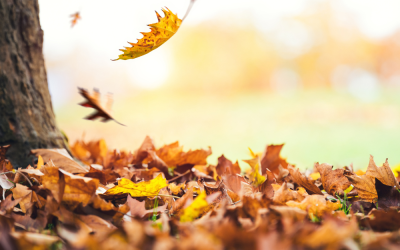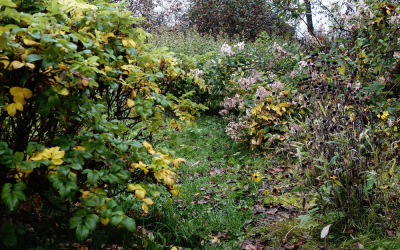Trees, like any living thing, can fall victim to disease. Early identification is crucial for saving a tree or preventing the spread of illness to others. This guide explores some of the most common tree diseases in the UK, their symptoms, and what you can do to help your trees stay healthy.
Spotting the Signs: General Symptoms of Tree Disease
Before diving into specific diseases, let’s look at some general signs that your tree might be unwell:
- Leaf Discolouration or Blight: Discolored patches, dead areas, or wilting leaves, especially outside of their usual growing season, can indicate disease.
- Premature Defoliation: Losing leaves significantly earlier than usual could be a sign of stress from disease.
- Dead Branches: Dry, brittle branches are a cause for concern, particularly if they appear in large numbers.
- Bark Abnormalities: Deep cracks, splits, holes, or soft, mushy bark can all be signs of disease or insect infestation.
- Fungus or Spores: The presence of mushrooms, conks, or powdery mildew on the bark or leaves can indicate fungal infection.
- Root Rot Symptoms: Wilting despite proper watering, stunted growth, or visible signs of root damage can point to root rot.
Common Tree Diseases in the UK:
- Ash Dieback: This devastating fungal disease is a major threat to ash trees in the UK. Symptoms include blackening and wilting of leaves, followed by dieback of shoots and branches, and lesions on stems. Early detection is crucial, and contacting a qualified tree surgeon is essential.
- Dutch Elm Disease: Another fungal disease, Dutch Elm Disease has tragically decimated elm populations. Watch for wilting, yellowing leaves that drop prematurely, and suckers (new shoots) sprouting from the base of the tree. Sadly, there’s no cure, but a tree surgeon can advise on removal to prevent further spread.
- Honey Fungus: This aggressive fungus attacks the roots of trees, causing white, spongy growth at the base of the trunk and around roots. Unfortunately, there’s no known cure, but a tree surgeon can assess the situation and advise on potential mitigation strategies.
- Horse Chestnut Leaf Miner: This isn’t strictly a disease, but this invasive insect pest can significantly weaken horse chestnut trees. Look for brown, serpentine mines within leaves, which eventually turn brown and fall prematurely. While not usually fatal, it can leave trees vulnerable to other issues. Consider consulting a tree surgeon for control methods.
- Phytophthora Diseases: These fungal infections attack the roots of various trees, causing wilting, stunted growth, and eventual decline. Symptoms can be vague, so professional diagnosis from a tree surgeon may be necessary.
- Apple Scab: This fungal disease primarily affects apple trees but can also infect other fruit trees. Symptoms include brown or black scabby patches on leaves and fruit, which can reduce yield and make fruit unsightly. A tree surgeon can advise on preventative measures and treatment options.
- Cedar Apple Rust: This fungal disease affects both juniper and apple trees. Look for orange, jelly-like growths on juniper in spring, followed by brown spots with black dots on apple leaves later in the season. Proper pruning and fungicide application, as advised by a tree surgeon, can help control this disease.
What You Can Do:
- Regular Tree Inspections: Regularly inspect your trees for signs of disease or damage. Pay close attention to the leaves, branches, and bark.
- Promote Tree Health: Maintain good tree health through proper watering, mulching, and fertilization. This helps trees resist disease and other stresses.
- Practice Good Hygiene: Remove fallen leaves and debris around the base of the tree, as these can harbor disease-causing pathogens.
- Seek Professional Help: If you suspect your tree has a disease, don’t hesitate to contact a qualified tree surgeon. They can diagnose the problem, recommend treatment options, and take necessary action to save the tree or prevent the spread of disease.
The Role of Tree Surgeons in Tree Disease Management
Tree surgeons are highly skilled professionals with the expertise to diagnose tree diseases and recommend appropriate courses of action. Here’s how they can help:
- Diagnosis: They can accurately identify the disease through visual inspection, taking samples for laboratory analysis, and using specialized tools.
- Treatment: Depending on the disease and severity, they may recommend options like fungicide application, pruning diseased branches, or root flare treatments.
- Preventative Care: Tree surgeons can advise on proper tree care practices to keep your trees healthy and resistant to disease.
- Tree Removal: In some cases, where the tree is severely compromised or poses a safety hazard, a tree surgeon may recommend safe and proper removal to prevent the spread of disease to other trees.
Working with a Tree Surgeon
If you’ve never worked with a tree surgeon before, here are some considerations before hiring one to diagnose a tree disorder:
- Qualifications: Ensure the tree surgeon is qualified and insured. Look for certification from bodies like the Arboricultural Association (AA) or the Chartered Institute of Forestry (CIF).
- Experience: Ask about their experience in dealing with tree diseases specific to your tree species.
- References: Request references from past clients to get a sense of their work quality and customer service.
- Quotes: Obtain quotes from several tree surgeons before making a decision.
Early detection and intervention are key to saving trees from disease
By familiarising yourself with common symptoms and seeking professional help from qualified tree surgeons, you can ensure the health and longevity of your trees.
Remember, healthy trees not only beautify our landscapes but also provide vital ecological benefits, so let’s work together to keep them thriving!
Additional Resources:
- The Woodland Trust: https://www.woodlandtrust.org.uk/trees-woods-and-wildlife/tree-pests-and-diseases/
- The Arboricultural Association: https://www.trees.org.uk/
- The Chartered Institute of Forestry: https://www.charteredforesters.org/



